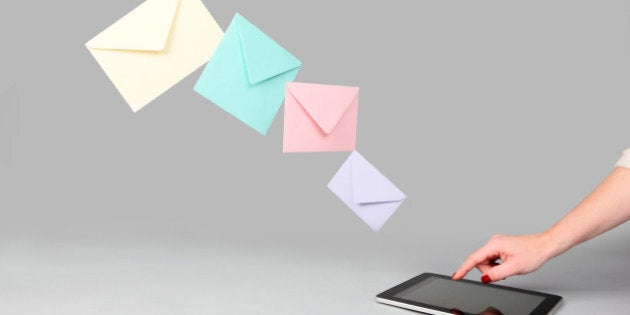
Email writing training is one of my favourite topics. I often write about the impact of good (and bad), email writing on our professional success and reputation.
The Risk Of Email
Most business communication is by email. We try to build and maintain relationships using this one-dimensional, sensory deprived mode of communication that was never designed to do what we are using it for. Email was designed for the United States Defense Department in 1971 by Computer Engineer, Ray Tomlinson as a way to send a simple (note the word 'simple'), message to another person across a network.email3
Email has gone far beyond sending a simple message. Not only are we using it as a project management and relationship-building business communication tool, in many ways we are using email to replace conversations -- displacing many phone and face-to-face conversations. For example, it's not uncommon for business associates:
- In another city to never meet or speak with each other, and to only communicate by email.
- Who sit next to each other to do most of their communication by email.
But it's important we don't forget that our email behaviour will help make or break our reputation. That's why email writing training is an important investment in our success. Email writing training teaches us (and our coworkers) the skills we need to communicate efficiently and professionally and to get our work done in a positive and resourceful manner.
I've written about email dos, email don'ts and email writing training before -- and while I believe email writing training is better for you and your associates, I'd like to share with you 11 more dos and one more don't:
Email Dos (+):
- Say Hello, Good Morning or Good Afternoon. This is the easiest way to remove an angry tone from your message. It's also polite and helps build relationships. Disregard this if you send the same person 20 or more emails each day.
- Get to the point. After saying Hello or Good morning, your first sentence should be your key point or action item. Once you've explained that, you can then provide the background information. Get to the point is a time saver for you as you likely write a shorter message which also saves your reader time.
- Always reply to email, especially if someone is waiting for the information you have. I've talked extensively about this in my blog post called "Email Etiquette: Should You Reply To My Email?" If you need more time, manage their expectations by letting them know how much time you need. It's polite, time efficient and builds relationships when you reply.
- Be careful with Reply All. If there are people listed in the Cc: field, pause. If they need to know, make sure you use Reply All. If they don't need to know then Reply to only those people who do.
- If you've been asked two questions be sure you provide two answers. If you need more time for one of the questions, provide the answer to one and let them know how much time you need for answer two.
- Format your email. This is often overlooked which is very unfortunate because formatting makes your email easier to read and understand... and easy to read email get replied to more quickly. So, use paragraphs and bullets extensively.
- Attract your readers attention using your email subject line. If your email subject line is one or two words it's likely not going to get them interested. "Sales Meeting" is poor, while "Friday's Sales Meeting: Location Change" is much better.
- Identify Attachments. When you identify you are sending attachments it reduces people's concern that you message might be spam or corrupt. It also ensures people don't miss the attachment (which happens often). When sending attachments try to name the files something appropriate. File0001 & File0002 mean nothing vs. Q12014Sales & Q22014Sales let your reader go directly to the attachment they want to see first.
- It's often easier to phone. It's difficult to describe detailed situations by email. It's impossible to brainstorm. If you have a complicated message, discuss in person or by phone and then summarize your conversation in a simple email message to make sure everyone agrees. IF you have bad news, a face-to-face conversation or phone call is a far better solution even though you might feel a bit uncomfortable.
- Walk away if you feel frustrated or angered by an email you received or some other influence (like finding the photocopiers jammed again), don't write an email and don't click Send to anyone. Go for a walk, take lunch, write out your frustration on a pad of paper, do a three-minute breathing meditation, do anything but don't click send. Whatever you write will likely have a disagreeable tone to it... which is never good.
- If your email 'chain' is getting long, it's very efficient to take a moment to summarize. What has been decided? What is still outstanding? Can some people be removed from the email chain? If you don't summarize long email it is easy to miss important items.
Email Don't (-):
- Never write an email you would not want on the front page of a newspaper. One tip I suggest during my Email Writing Training is, "If you wouldn't be proud to send the email to your mother -- re-write it."
Conclusion:
Effective Email Writing Training will help you:
- Get to the point -- quickly
- Reduce mistakes caused by misunderstood email
- Stop abusing To... Cc... and Reply All...
- Avoid writing hostile, bossy or rude email messages
- Write email messages that are easy to respond to
- Support corporate values and personal values
- Support teamwork
- Be more confident and more relaxed at work
Happy communicating, harmony and email writing training.